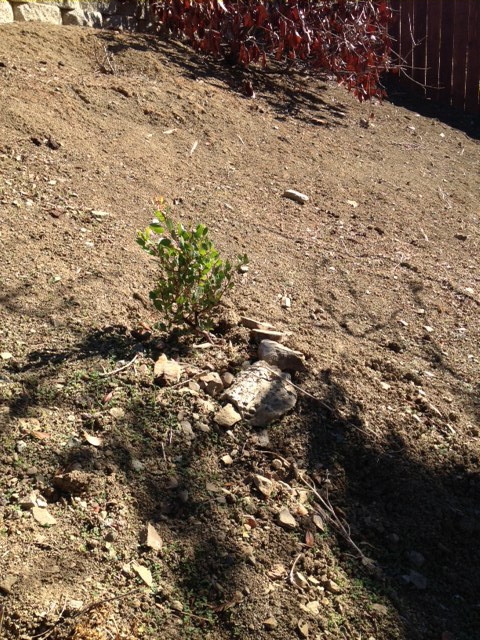- Author: Kathy Thomas-Rico
As our dry winter continues, I feel the need to drag out my soapbox once again. Isn’t it time we got real about drought-tolerant landscaping? I am not advocating severe rock-and-cactus plantings. I’m suggesting some serious consideration of California native plantings.
March is the perfect month for us to take notice of the beauty of California native plants. Poppies and lupines are coloring hillsides all across the state. Manzanitas are dotted with tiny whitish blooms. Our stately blue oaks are budding out. Ceanothus is blooming cool blue from the coast to the foothills. And all this glory comes along without supplementary irrigation!
Have you noticed the other California stunner? The Western redbud (Cercis occidentalis) is dazzling right about now, its leafless branches covered in magenta blooms. You can see the shrubs along roadsides and freeways throughout Solano, Yolo and Sacramento counties. They’re particularly beautiful on the road to Lake Berryessa.
Now this is a native I can really get behind. It is easy to grow, though a bit slow. It’s not too picky about soil, but seems to be happiest on a well-drained, sunny hillside. It is deciduous, but with year-round interest (magenta blossoms now, burgundy heart-shaped leaves in spring, seedpods throughout winter). It can be trained into a smallish tree (8-20 feet), or left to its shrubby natural growth patterns. Not much bothers redbuds. The best part, in my opinion: Once a Western redbud is established in your landscape, it does not require extra irrigation. You might attain faster growth with occasional summer water, but the tree will do just fine without.
How cool is that?

- Author: Erin Mahaney
I went for a hike near Mt. Diablo a few weeks ago and was reminded again of the spectacular wildflower displays that we enjoy in the Bay Area. And even better yet, some of these plants are suitable for our gardens! In particular, several varieties of rampantly blooming Manzanita (Arctostaphylos spp.) caught my eye. I tend to forget this relatively unassuming plant most of the year, but in the spring it puts on a spectacular show.
The varieties of Manzanita suitable for the home garden are too numerous to list here, but you can find good descriptions in the Sunset Western Garden Book. In general, however, Manzanitas are evergreen shrubs that vary from low groundcovers to tree-like shrubs. The plants are characterized by branches with striking smooth, red to purple-ish bark. In late winter or early spring, the plants bear small, urn-shaped, white or pink flowers followed by berry-like fruits. Manzanitas require good drainage, but can tolerate poor soil. Importantly for those interested in water conservation, the plants need little to moderate water once established.
But, if like me, you don’t have room for a Manzanita in your garden, this is a perfect time of year to take a stroll to enjoy their blooms.



- Author: Trisha Rose
Manzanita, properly known as Arctostaphylos of the Ericaceae family will hopefully be happy enough to survive and prosper on my backyard slope. I have chosen the variety A. densiflora 'Howard McMinn' which should grow to 5 or 6 feet in height and may spread to 7 feet. It should have whitish-pink flowers but I choose it because of the beautiful reddish bark. As a child I would go on hikes in the Southern California San Gabriel Mountains where the manzanita flourished. I have my fingers crossed.
The steep slope in my backyard continues to bewilder me and so far is winning the battle against supporting plant life. It doesn't help that our last winter didn't give much in the way of replenishment to the water table. Usually I need to provide supplemental water during the summer to the plants on my slope. I have some pop up sprinklers on manual valves and even pulled a long hose up the hill to add more, but this year most of the plants just gave it up. Even the very established foundation bushes that can stand a lot of neglect turned crispy.
I put two 'Howard McMinn' manzanita in the ground last weekend just before the rains started this past Monday. So far they are still in the ground and the leaves are still on the branches.
Wish me luck.





